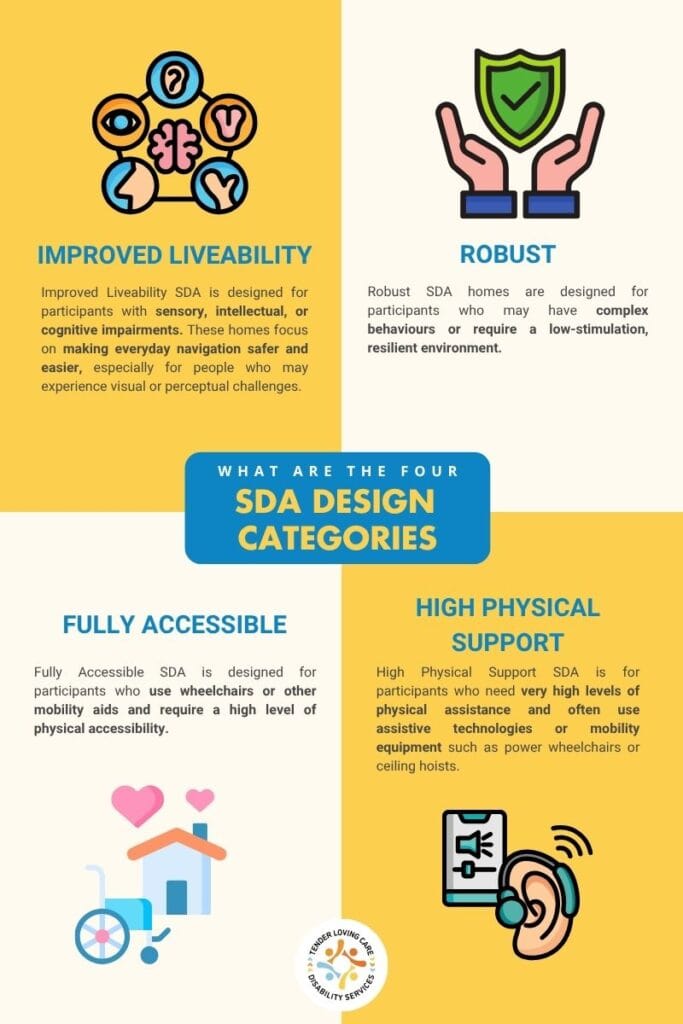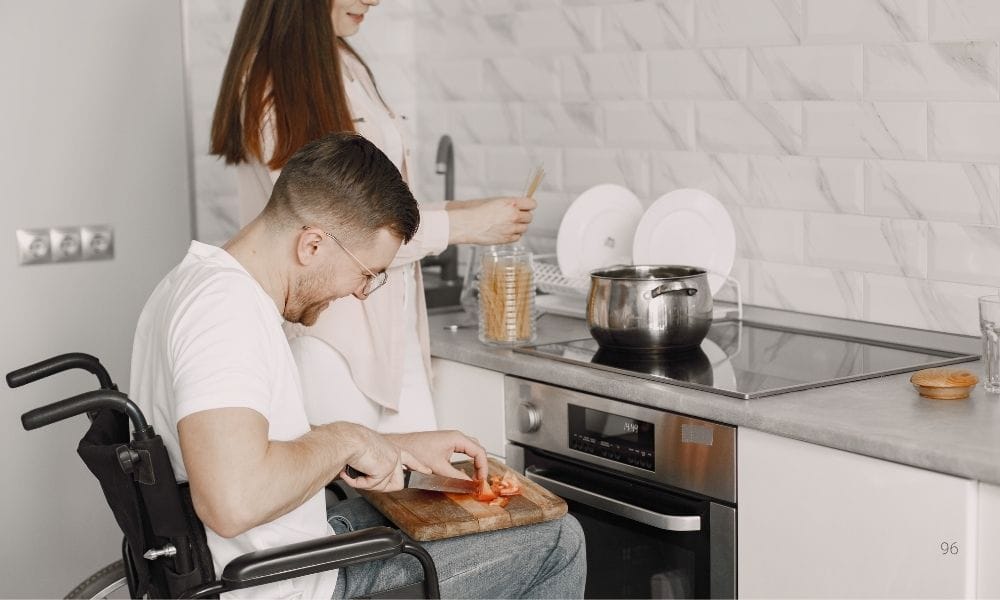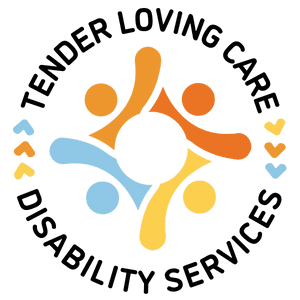For some NDIS participants, finding the right home isn’t just about comfort — it’s about access, safety, and support. That’s where Specialist Disability Accommodation (SDA) comes in.
SDA refers to specially designed homes for people with extreme functional impairment or very high support needs. These homes are not the support services themselves, but the physical environments that enable participants to live safely and independently, often while receiving daily supports.
Under the NDIS, SDA homes are built to one or more of four design categories. Each one is designed to suit different support needs and accessibility requirements. Understanding these categories can help participants, carers, and support coordinators choose the most suitable housing option.

1. Improved Liveability: Supporting Sensory and Cognitive Access
Improved Liveability SDA is designed for participants with sensory, intellectual, or cognitive impairments. These homes focus on making everyday navigation safer and easier, especially for people who may experience visual or perceptual challenges.
Key Features:
- Clear lines of sight and logical layouts
- Good lighting and luminance contrast between surfaces
- Accessible light switches, windows, and fittings
- Consideration for low-stimulation environments
These design features make it easier for participants to find their way around, avoid confusion, and maintain independence.
This category may suit someone on the autism spectrum, a person with early-stage dementia, or a participant with low vision who needs improved cues and contrast to navigate their environment.
2. Robust: Built for Stability and Safety
Robust SDA homes are designed for participants who may have complex behaviours or require a low-stimulation, resilient environment.
These homes prioritise physical strength and safety. The design helps reduce the risk of injury and the need for frequent repairs, while also maintaining a homely atmosphere.
Key Features:
- High-impact wall linings and durable surfaces
- Secure windows and fittings
- Soundproofing to reduce sensory overload
- Separate breakout spaces for calming or privacy
This type of accommodation is ideal for participants who benefit from consistent, predictable environments with minimal sensory triggers.
3. Fully Accessible: For People with Physical Disability
Fully Accessible SDA is designed for participants who use wheelchairs or other mobility aids and require a high level of physical accessibility.
Key Features:
- Step-free entry and circulation throughout the home
- Wider doorways and corridors
- Accessible kitchens and bathrooms compliant with AS1428.1
- Reachable controls, switches, and fittings
This design empowers participants to move around the home independently and perform everyday tasks like cooking or bathing with minimal or no assistance.
4. High Physical Support: Complex Needs, Full Accessibility
High Physical Support SDA is for participants who need very high levels of physical assistance and often use assistive technologies or mobility equipment such as power wheelchairs or ceiling hoists.
Key Features:
- All the features of Fully Accessible SDA
- Structural provisions for ceiling hoists
- Emergency power backup for essential devices
- Smart technology readiness (e.g. intercoms, automated doors, voice-activated lighting)
These homes are often recommended for people with significant and ongoing care needs, including those who use ventilators or need overnight support.

Choosing the Right SDA Design Category
Each SDA home is enrolled under a specific design category (or in some cases, multiple categories). The right match is based on the participant’s functional needs, goals, and support plan.
This decision is made with the help of allied health assessments (such as occupational therapy reports), NDIS planners, and housing providers. It’s not just about what’s available — it’s about what’s appropriate for the participant’s long-term wellbeing, safety, and independence.
Designing for Dignity and Choice
These four SDA design categories aren’t just building codes. They represent a commitment to giving participants housing that meets their needs — with dignity, choice, and flexibility.
At Tender Loving Care Disability Services, we believe that every participant deserves a home where they can thrive. Whether it’s Improved Liveability or High Physical Support, we’re here to help participants and their supports understand what’s available and how to access it.
If you’re exploring SDA housing options for yourself or someone you support, reach out to our team. We’re ready to assist with questions, referrals, and next steps.
